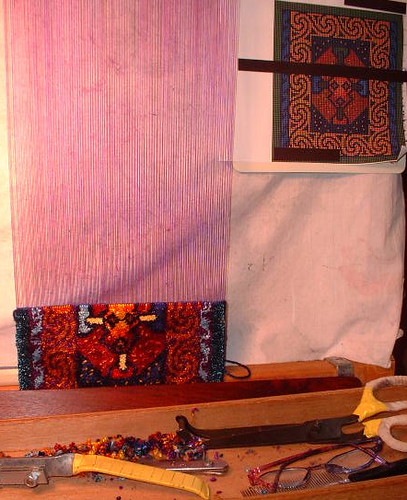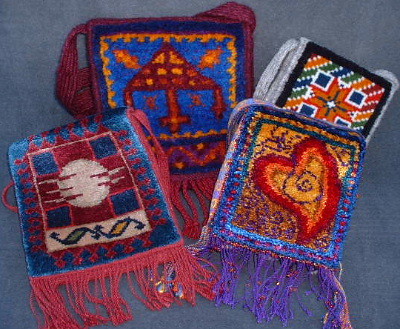Adult Learners
I will be taking a cardweaving class at CNCH this coming Spring at Asilomar. I admire the work of the instructor, Gudrun Polack, and have taken a brief class from her before. Gudrun has lots of samples of her work, one of my criteria for choosing a teacher. I look for people who are *doing* the work, not just talking about it. I look for people who have examples of their work to show, and whose work I admire.
I was asked by a friend *why* I was taking a class in cardweaving, because I have been doing it for almost 30 years myself. Well, there's always something new to learn, and Gudrun approaches things quite differently than I do. She has a mathematical mind and approach to cardweaving, and I could use a little of that to balance out my (kindly put) intuitive approach to making bands.
I took short session from both Linda Malan and Linda Hendrickson at Convergence in Denver last summer, and picked up some very useful tips. I also got to see into the process of other weavers, and it has helped me refine mine.
I really began to delve into the adult learning process 6 years ago when I began to weave knotted pile. It has been interesting, engaging, challenging and exciting to learn this weaving technique. It is so different from weaving fabric, throwing a shuttle, painting warps and making clothing. I found myself intensely focused once again, and that is a wonderful feeling.

I have devoted most of the past six years to knotted pile, and the related techniques, including cardweaving, that go into making small bags from the pile fabric. These are more *hands-on* techniques than throwing a shuttle. My fingers are actively engaged, I handle the yarn more, and I manipulate the warps by hand. It has brought back the excitement I first felt when I began weaving 28 years ago. What a gift!
Not all of the work I have done in knotted pile has been successful. It has been a learning process, but I strive to finish each piece, even when it's not going well. If nothing else, it can be used as a cautionary tale for others. But really it's for me too: the process of finishing is important. The *body* of work is important, not just the individual piece.
I think this excitement that I feel is translated to other people, and as they learn this weaving, a new community of knotters has grown. As a technique, it is not unlike knitting: each knot is tied by hand, and then rows of knots build into a fabric. It is a meditative process, and once the fingers learn, the mind is free to imagine, as the work builds.

I was asked by a friend *why* I was taking a class in cardweaving, because I have been doing it for almost 30 years myself. Well, there's always something new to learn, and Gudrun approaches things quite differently than I do. She has a mathematical mind and approach to cardweaving, and I could use a little of that to balance out my (kindly put) intuitive approach to making bands.
I took short session from both Linda Malan and Linda Hendrickson at Convergence in Denver last summer, and picked up some very useful tips. I also got to see into the process of other weavers, and it has helped me refine mine.
I really began to delve into the adult learning process 6 years ago when I began to weave knotted pile. It has been interesting, engaging, challenging and exciting to learn this weaving technique. It is so different from weaving fabric, throwing a shuttle, painting warps and making clothing. I found myself intensely focused once again, and that is a wonderful feeling.

I have devoted most of the past six years to knotted pile, and the related techniques, including cardweaving, that go into making small bags from the pile fabric. These are more *hands-on* techniques than throwing a shuttle. My fingers are actively engaged, I handle the yarn more, and I manipulate the warps by hand. It has brought back the excitement I first felt when I began weaving 28 years ago. What a gift!
Not all of the work I have done in knotted pile has been successful. It has been a learning process, but I strive to finish each piece, even when it's not going well. If nothing else, it can be used as a cautionary tale for others. But really it's for me too: the process of finishing is important. The *body* of work is important, not just the individual piece.
I think this excitement that I feel is translated to other people, and as they learn this weaving, a new community of knotters has grown. As a technique, it is not unlike knitting: each knot is tied by hand, and then rows of knots build into a fabric. It is a meditative process, and once the fingers learn, the mind is free to imagine, as the work builds.


2 Comments:
Love the knotted piece on the loom.
(why do the fishies sound like you when they call, hmmm?)
Because they are channeling me? They are hoping to swim off the loom sometime. . .
Post a Comment
<< Home